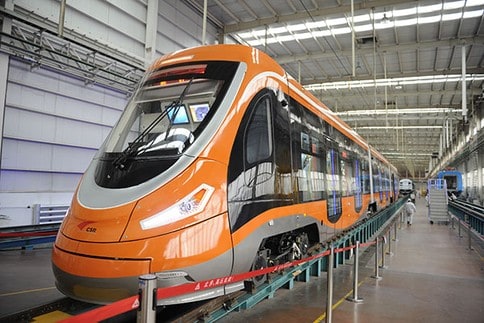A partial blackout in Jakarta in 2009. Indonesia’s decades old electricity grid cannot meet current demand, and the government in looking for solutions. Late in July, India suffered the world’s largest ever power outage when transmission networks serving nearly 700-million people collapsed. While the event was the highly publicized it was not without precedent in the southern part of Asia.
On August 20, 2005 a power outage in Indonesia left 100-million without electricity. The culprit was the country’s electrical grid, whose main lines were more than two-decades old. Today, the problem hasn’t gotten any better. Since 2008, the number of Indonesians with access to electricity has fallen from 67% to 65%, and is rising by more than 2.5 million per year. It now sits at 86-million.
Into this environment wades Vancouver’s Ballard Power (TSX:BLD). Last week, the company announced it had has received purchase orders for 102 fuel cell power generation systems to be delivered to the company’s new southeast Asian distributor, Cascadiant Inc.
Ballard says the systems will be used on networks of two wireless telecom customers in Indonesia to provide “reliable and cost-effective backup power in the event of grid outages.”
Cascadiant CEO Marshall Towe said: “Backup power solutions are, by their nature, critical elements of telecom networks. Therefore, the decision to use fuel cell-based products has certainly been given careful consideration by our customers.”
____________________________
This story is brought to you by Cantech Letter sponsor BIOX (TSX:BX). The largest producer of biodiesel in Canada, BIOX’s proprietary production process has the capability to use a variety of feedstock, including recycled vegetable oils, agricultural seed oils, yellow greases and tallow. For more information CLICK HERE.
______________________________
Vancouver’s Ballard Power soared to attention in the nineties when it was believed that hydrogen fuel cells were the green automotive solution of the future. In 1993, the same year that Ballard IPO’d at $6 a share, the company demonstrated the world’s first zero-emission, fuel-cell bus.
The promise of the Ballard’’s technology seemed both limitless and inevitable, and it was reflected in the company’s share price. By 1997, its stock had soared to $82, as the company received investments from DaimlerChrysler and Ford. Every major car company was developing fuel cell vehicles, from Honda’s FCX to GM’s Sequel.
But the inability of fuel cell developers to reduce costs, coupled with advances in battery technology began to sway momentum to electric vehicles. By 2005, shares of Ballard had fallen south of $4 and in 2007, it got out of the automotive market altogether. The revamped company now concentrates, largely, on providing fuel cell power to things that don’t move, such as its FCgen fuel cell technology for telecommunications backup applications, or for things that move rather slowly, like forklifts.
Ballard sudden relevance in power generation systems comes about because of the company’s recent acquisition of assets from IdaTech, a longtime Ballard customer, and from the company’s own Dantherm Power hydrogen systems. CEO John Sheridan says the resulting mix of technology, product lines, distributor agreements, and customer contracts has provided Ballard with “…a complete set of fuel cell power generation products, along with distributor and customer relationships in leading markets for fuel cell commercialization.”
Shares of Ballard Power closed today up 1% to $1.
______________________
______________________
Leave a Reply
You must be logged in to post a comment.






 Share
Share Tweet
Tweet Share
Share




Comment